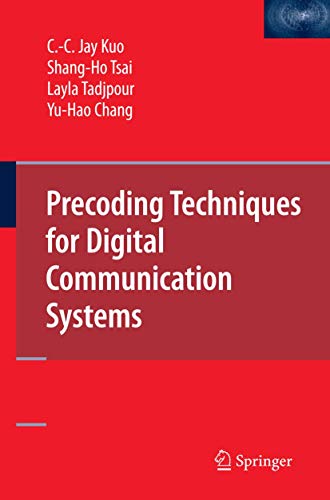This book details modern precoding techniques for modern digital communications systems. It covers both the fundamentals of the subject as well as system applications. Coverage first provides an overview of existing precoding techniques. From this tutorial overview, readers can understand the evolution of precoding and the principles of various precoding schemes. The book then discusses the application of state-of-the-art precoding schemes to current and/or emerging communication systems to combat impairments such as inter-symbol interference (ISI), multiaccess interference (MAI) and the Doppler effect. Those communication systems include: orthogonal frequency division multiplexing (OFDM), multiuser OFDM, MC-CDMA, multi-input and multi-output (MIMO) and ultra wideband (UWB) radio systems. In addition, a discussion on advanced topics and an extensive list of references will facilitate researchers to further explore this subject on their own.
This book provides a comprehensive review of precoding techniques for digital communications systems from a signal processing perspective.
In the first part of the book the authors provide an overview of the principles of precoding for channels with intersymbol interference (ISI) such as Tomlinson-Harashima precoding and Trellis precoding. There is also a discussion on how the widely used OFDM systems can be treated as a special case of precoding techniques and introduce precoding schemes for OFDM systems. Further, the book provides an overview of various existing precoding techniques that reduce the interference level while keeping the receiver design simple in CDMA systems. There is also a complete chapter on the issue of precoding for multiple input multiple output (MIMO) channels.
The second part of the book introduces the state-of-the-art precoding techniques originating from several projects and research activities involving multiuser OFDM transmissions and ultra-wideband (UWB) radio systems.
